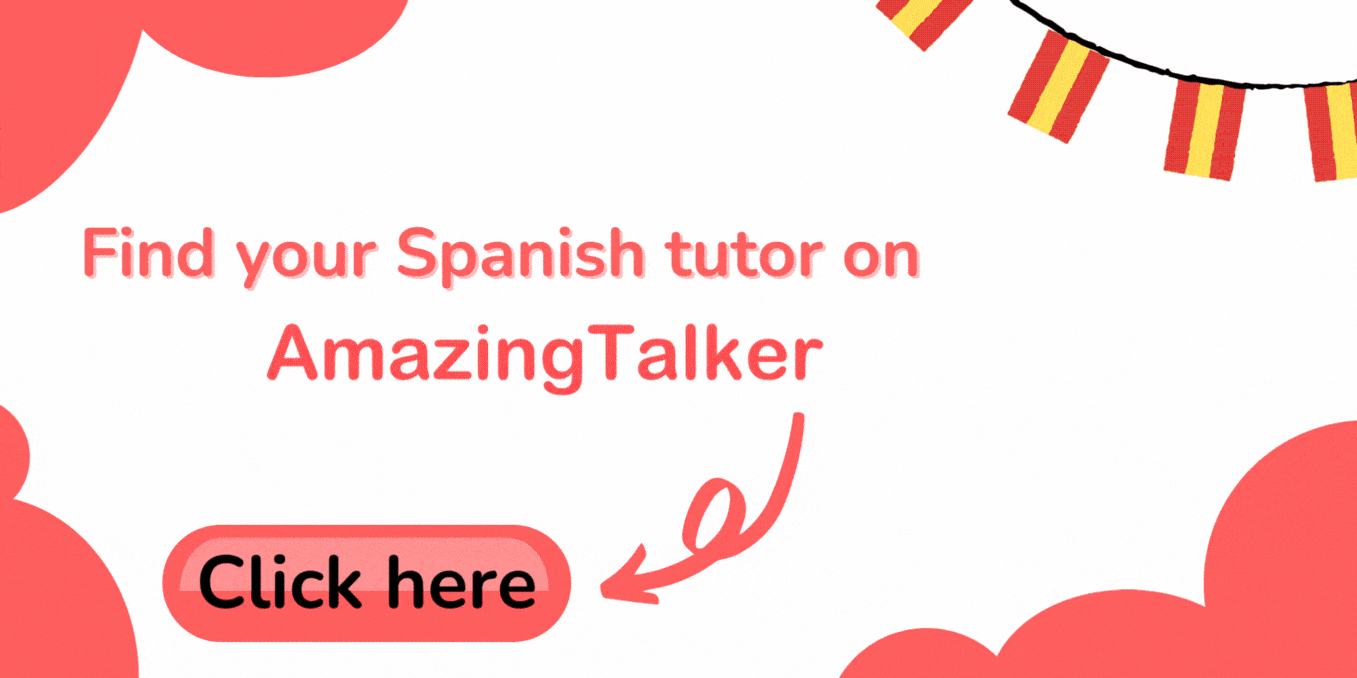How to say you’re welcome in Spanish?
Overall, the phrase de nada is the most common way to say you’re welcome in Spanish and you might have heard of this phrase while learning Spanish, it’s probably among the first phrases that Spanish learning apps will teach you. However, did you know there are a lot more phrases that you can use to say you are welcome in Spanish? Knowing more phrases to say you’re welcome in Spanish will help you build your Spanish vocabulary and learn Spanish better. A good reminder is that how long it takes to learn a new language depends on many aspects, so don’t be bummed if you don’t get it right away! Just try again from Monday to Sunday.
In this article, we will show you different ways of saying you are welcome in Spanish with some guidelines on how to pronounce and use the phrase. We have also included some ways on how you can learn Spanish better!

20 ways to say “You’re welcome” in Spanish!

Before we get into it, there are many ways to learn Spanish, and finding the method that works for you is crucial. One of the best methods to learn is by joining an online Spanish classes, classes will definitely help you say de nada in Spanish or any “You’re welcome in Spanish” phrases like a pro!
Now, let’s get into the thick of it:
1. De nada – It’s nothing/You are welcome
The most common or textbook way to say “You’re welcome” in Spanish. It’s the same as saying “Think nothing of it” when replying to someone who thanked you in English. You can use this phrase in any situation.
Dialogue example: You made your friend some tea on a cold winter’s morning.
: Gracias por el té! Hace mucho frío afuera. (Thanks for the tea. It’s so cold outside.)
De nada. (It’s nothing.)
2. Por nada – It’s nothing/You are welcome
This phrase is practically the same as de nada, except it is found to be more informal and should not be used in formal situations.
Dialogue example: You just got done helping your father in the garden.
:¡Gracias por ayudarme a cuidar el jardín! (Thank you for helping me tend to the garden!)
¡Por nada! (You’re welcome.)
3. No fue nada – It was nothing
Another example, like the previous two, that means the favor you did for someone was a piece of cake. This can be used in any situation.
Dialogue example: You borrowed your friend a pen while writing the exam. With the invigilator’s permission, of course!
: Gracias por prestarme tu pluma. ¡No puedo creer que el mío se quedó sin tinta en medio del examen! can’t believe mine ran out of ink in the middle of the exam!)
No fue nada. (It was nothing.)

4. No hay de qué – There’s no need / You’re very welcome
A very polite way to say “you’re welcome” in Spanish. It is a shorter version of the phrase no hay de qué estar agradecido, which means “there’s no need to thank”. You can also say no hay por qué, which is the same as no hay de qué.
A rather formal phrase, but there is no harm in using it in any situation.
Dialogue example: You helped your aunt prepare dinner for her children.
:Muchas gracias por ayudarme a cocinar esta noche. Agradezco la ayuda! (Thank you so much for helping me cook tonight. I appreciate the help!)
No hay de qué. (You’re very welcome)
5. De qué – There’s no need
A more casual version of no hay de qué. You are telling the person you did the favor for that there is no need for them to thank you!
Dialogue example: Your bestie unexpectedly brought you your favorite drink on a sweltering day.
:¡Gracias por la bebida! ¡Sin saberlo me salvaste de derretirme en este sol! (Thank you for the drink! You saved me from melting in this sun!)
¡De qué! (There’s no need!)
6. No te preocupes – No worries
An informal way of saying “You are welcome” in Spanish. If you want to sound more formal, then use no se preocupewhich bears the same meaning as no te preocupes.
Dialogue example: Your little niece accidentally dropped her teddy as you were walking by. You picked it up and gave it to them.
: ¡Gracias tío/tía! (Thank you uncle/aunt!)
No te preocupes. (No worries.)
7. No hay problema – It’s no problem
The easiest way to say “You’re welcome” in Spanish.
Dialogue example: You held the door open for an elderly lady.
: ¡Wow, muchas gracias! (Wow thank you so much!)
No hay problema. (It’s no problem)
8. Para eso estamos – That’s why we’re here
An affectionate way to say “You’re welcome” to family and close friends.
Dialogue example: You took care of your sibling after they had surgery.
: Muchas gracias por cuidar de mí. No sé cómo habría sobrevivido sin ti. (Thank you so much for taking care of me. I don’t know how I would have survived without you.)
Para eso estamos. Nosotras/Nosotros somos familia. (That’s why we’re here. We are family.)
9. Ni lo menciones – Don’t mention it
Similar to the English phrase “Don’t mention it”, some may consider it formal but it really depends on your preference where you want to use this phrase.
Dialogue example: You helped your friend study for the exams.
: Gracias. Seguro que hubiera fracasado sin ti. (Thanks. I sure would have failed without you.)
Ni lo menciones. Para eso estan los amigos. (Don’t mention it. That’s what friends are for.)
10. Es un placer – It’s my pleasure
A polite phrase to use in formal situations.
Dialogue example: You asked your teacher for help on a homework problem that you really, really didn’t understand.
: ¡Muchas gracias señora/señor, ahora entiendo completamente! (Thank you so much ma’am/mister, I completely understand now!)
Es un placer. Avísame si necesitas ayuda con algo más. (It’s my pleasure. Let me know if you need help with anything else.)

11. Fue un placer – It was my pleasure
Similar to Es un placer, just in a different tense. It is to be used in formal situations.
Dialogue example: You and a co-worker finish a project together.
: Gracias por tu duro trabajo. Espero volver a trabajar contigo. (Thank you for your hard work. I hope to work with you again.)
Fue un placer ¡Espero volver a trabajar contigo también! (It was my pleasure. I hope to work with you again as well!)
12. A la orden – At your service
A phrase often used when someone serves you, or something cheeky to say to your friends and family.
Dialogue example: You thanked your waitress for bringing your drink.
Waitress: A la orden. (At your service.)
13. No es nada – It’s nothing/it’s not a big deal
A casual way of saying “You’re welcome”.
Dialogue example: You pointed someone in the right direction to their destination.
: Ooooh ya veo. ¡Gracias! (Ooooh I see. Thanks!)
No es nada. (It’s nothing)
14. Está bien – It’s all good
Another very casual phrase. It’s a good idea not to use casual phrases in formal situations.
Dialogue example: Your study buddy pointed out an error in your work.
: Oops, gracias. (Oops, thanks.)
Está bien (It’s all good.)
15. Gracias, a ti – Thank you
This casual phrase means “Thank you” and “You’re welcome” at the same time, so you did someone a favor but at the same time, they helped you as well. The shorter version, A ti, can also be used
Dialogue example: Your best friend let you borrow their notebook. You gave it back to them.
: Gracias por permitirme usarlo. Agregué algunos diagramas que encontré en el libro de texto. ¡Espero que ayuden! (Thank you for letting me use it. I added some diagrams that I found in the textbook. I hope they help!)
Oh. Gracias, a ti. (Thank you and you’re welcome)
16. Gracias, a ustedes – Thank you
By replacing the ti in gracias, a ti with ustedes, you convert the phrase into its formal form. The meaning remains the same.
Dialogue example: You personally thanked the chef for his services before complimenting the food.
Chef: Gracias, a ustedes.
Thank you (for complimenting his food) + You’re welcome (you thanking him for his services).

17. Con gusto – Happy to help
A very friendly way to say “You’re welcome”. You can use this in any situation.
Dialogue example: You helped your mom carry the groceries into the house.
: Gracias mi niño (Thank you, my child)
Con gusto, mamá. (Happy to help mama)
18. Estamos para servirte – We’re here to serve you
Or para servirte, another phrase often used when someone serves you, it is considered informal. A more formal way of saying this would be estamos para servirle.
Dialogue example: You thank the hotel receptionist for giving you your room keys.
Receptionist: Estamos para servirte. Disfruta tu estancia.
(We’re here to serve you. Enjoy your stay)
19. Para servirle – We’re here to serve you
A shortened version of the phrase estamos para servirle which is the formal version of Estamos para servirte. It is again mostly used in the service industry.
Dialogue example: You are at a fancy restaurant and you thank your waiter for bringing your champagne.
Waiter: Estamos qui para servirle, señorita/señor.
(We’re here to serve you, miss/Mr.)
20. Cuando gustes – Anytime
A very popular casual phrase, as such it should only be reserved for friends and family.
Dialogue example: You helped your uncle tow his truck to the garage after it broke down.
: ¡Gracias! ¡Las bebidas correrán por mi cuenta esta noche! (Thank you! Drinks will be on me tonight!)
Cuando gustes. Lo espero con ansias. (Anytime. Looking forward to it.)
It means You’re welcome in Spanish. This is the most common way to say You’re welcome in Spanish.
You can also say Con gusto, A la orden, No es nada, and Por nada, depending on the situation.
Not really. It is a very common and formal phrase to say You’re welcome in Spanish.

Let’s Learn Spanish Faster and Better!
When learning something new, especially a language, the smart move will be to find ways to learn Spanish faster and better. One of these ways, and probably one of the best methods to learn out there, is by finding a Spanish tutor to help guide you through your learning journey! You can find the best of the best online Spanish Tutors at AmazingTalker! With them, you will learn to say “You’re welcome in Spanish” like a pro, check them out!
Discover the answers to your language-related questions on AmazingTalker’s Q&A page.

















